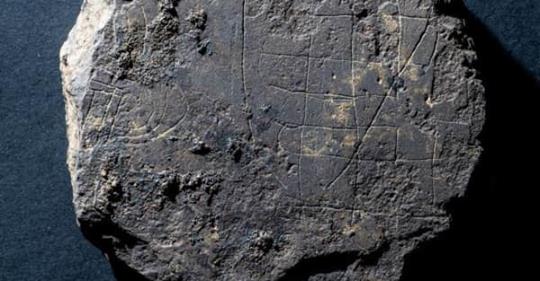Ancient Viking gaming board found in Scotland
Archaeologists searching for a lost Scottish monastery linked to the famous Book of Deer, have unearthed a rare Norse artifact. Archaeologist Alison Cameron and her team have found a stone gaming board which would have been used to play the Norse strategy game Hnefatafl. Hnefatafl is a board game with an odd number of playing spaces. The pieces would have been set out on the board with the king on the central square, surrounded by his defenders. The attacking pieces would have been asymmetrically placed around the edge of the board.
The discovery was made as archaeologists appear to be getting close to pinpointing the whereabouts of a lost Pictish Christian site. The monastery, which disappeared about 1,000 years ago, was home to the Book of Deer, a 10 century book of gospels which contains the first written examples of Scottish Gaelic. Details written by monks in Scots Gaelic in the margins of the Book of Deer have provided archaeologists with clues to the location of the monastery. Excavations continue in the Old Deer (Scottish Gaelic: Dèir) area parish in the district of Buchan, Aberdeenshire (Siorrachd Obar Dheathain) in Scotland.






